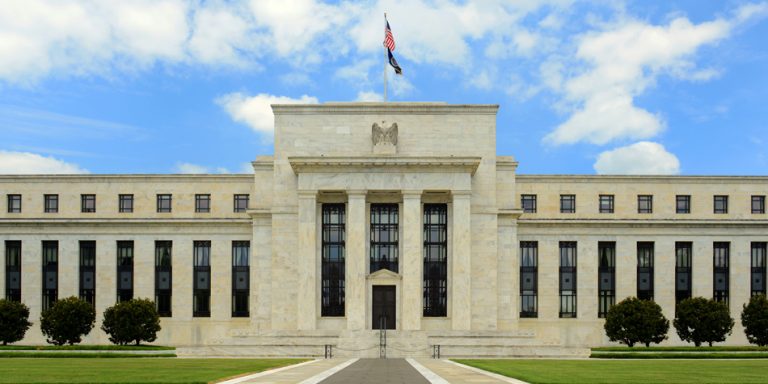On Wednesday the Federal Reserve cranked up the nation’s interest rates, as was widely expected. Namely, the Fed rate hike of a quarter of a point pushed the target for its benchmark up to a range between 1.75% and 2.0%, marking the seventh such increase since the global economy came out of the 2008 sub-prime-prodded meltdown.
The language accompanying the decision, of course, was dissected as much as (if not more than) the revision to the target. The addition of “sustained expansion” to the narrative hinted at the FOMC’s positive view of the economy, but the removal of the statement “for some time” when describing how long the Fed would accommodate it was interpreted as hawkishness.
It’s an interesting and occasionally frustrating exercise. And, re-framing the hawkish/dovish debate by more directly asking how the Fed rate hike might impact capital spending doesn’t necessarily help a lot. As always, the answer is complicated, and often includes a qualifying “it depends on.”
If we’re being intellectually honest though, no, another rate — or the two others the FOMC say they see in store before the end of the year — isn’t likely to quell capital expenditures to a meaningful degree.
Impact of Fed Rate Hike on CapEx
There are two key schools of thought in play that lead investors to a plausible answer to the question. On the one hand, the greater the cost of capital, the less likely companies are to incur the expense. On the other hand, the same economic strength that’s driving the inflation that’s driving interest rates upward is also a growth opportunity for organizations that spend their money wisely.
The first quarter’s capital spending data forces the two camps to confront one another, yet doesn’t quite yield an answer.
The specifics? In Q1 of 2018, S&P 500 companies upped their capital expenditures by 39% despite the fact that (at the time) the cost of capital was higher than it had been in years.
Wells Fargo’s equity research team explained of the unexpected increase in April, “spending decisions are not only based on the cost of capital, but the total return on investment, which is influenced by final demand.” Ergo, perhaps the more meaningful question investors should be asking is, at what point does the cost of capital outweigh the upside it may bring? Even with Wednesday’s Fed rate hike, interest rates are still at moderate levels, and the FOMC fully acknowledged that household spending “has picked up” and that economic growth has been “rising at a solid rate.”
There aren’t too many different ways to interpret that message, and the Wells Fargo CapEx didn’t disagree. It noted “real final sales are expected to pick up over the coming quarters, adding “financial conditions also remain supportive of business spending.”
Fargo ultimately believes the answer is somewhere in the middle, concluding “We anticipate the tailwinds to win out over the headwinds, but for equipment spending to moderate to around a six percent pace later this year.”
Nothing about the language with this week’s Fed rate hike would unwind that view.
There is a noteworthy nuance to the matter though.
Tech Sector Leads Spending
Although capital spending is still going strong and it should remain firm for the foreseeable future, rising CapEx levels are not terribly well-balanced among all sectors. The technology sector is driving the bulk of the spending, according to Credit Suisse’s data. The bank reckons that the IT sliver of the market upped its capital expenditures by nearly 60% during the first quarter.
Alphabet Inc (NASDAQ:GOOGL, NASDAQ:
GOOG) led the way, with its Google arm tripling CapEx on a year-over-year basis. Microsoft Corporation (NASDAQ:MSFT) earned an honorable mention as a big first-quarter spender too.
At the other end of the spectrum are the industrials like Caterpillar Inc. (NYSE:CAT) and Honeywell International Inc. (NYSE:HON), which actually spent 3% less on equipment purchases last quarter than they did during the first quarter of 2017.
Other sectors fell somewhere in between on the spending-growth spectrum, although none of them even came close to rivaling the technology sector’s capital expenditure growth. It’s a risky scenario simply because the nature of technology itself could turn the spending spigots off as quickly as they were turned on, bringing a quick end to marketwide capital investment growth.
Still, as economic growth stabilizes in its new, steeper trajectory, greater comfort with the economic backdrop will get other sectors off the spending sidelines.
The Last Word
So no, broadly speaking the recent Fed rate hike shouldn’t bring capital spending to a screeching halt. Organizations will spend money as long as there’s a reasonable expectation that such spending will yield a strong return on the investment. And, with consumer confidence near multi-year highs at the same time business confidence is soaring, clearly corporations like their odds of being able to tap into growth. That spending growth may not match Q1’s levels, but even half that pace would still translate into huge cash outlays.
And if you listen closely, no business is yet complaining about the cost of capital. That narrative is only coming from the perpetual pessimists.
As of this writing, James Brumley did not hold a position in any of the aforementioned securities. You can follow him on Twitter, at @jbrumley.

